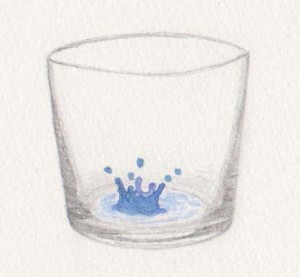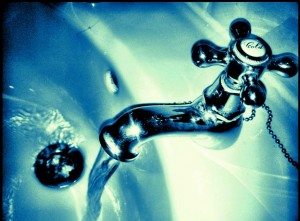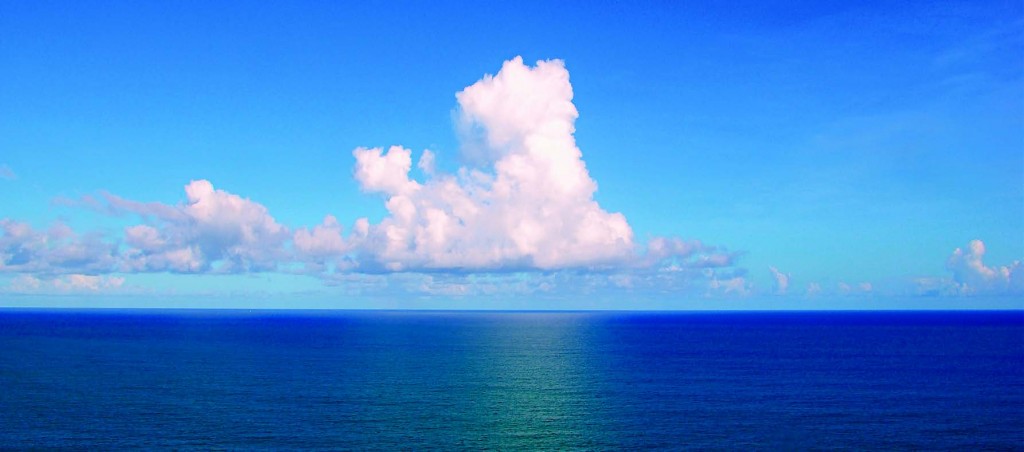MONDAY, 3 FEBRUARY 2014
On a recent trip to the Greek island of Santorini I discovered that due to the scarcity of fresh water there, most drinking water is either imported or created by desalination—the process of removing salt from sea water. This scarcity of water is a problem that plagues many small islands or particularly arid regions of the Earth. In Arizona the land occupied by the Navajo tribe has been hit by a 20-year drought, making clean water one of the most precious commodities. Navajo families are required to drive hundreds of miles just to collect water, an act which has become known as ‘water hauling’.Perhaps more surprisingly, Singapore has also faced a water crisis over the last few decades. Singapore is made up of 63 tropical islands at the southern tip of the Malay Peninsula and is regularly drenched in torrential rain. In fact, it experiences around three times more rainfall than Britain as it is subjected to almost 2400mm a year. It is also the third most densely populated country in the world with over 5 million inhabitants crammed in just over 700 km2, about twice the size of the Isle of Wight.
Due to this incredible density (30 times higher than the UK), and the practical inability of capturing 100 per cent of the rainfall, Singapore is unable to meet its water demands and is already reliant on imports from neighbouring countries. As of 2009, 40 per cent of Singapore’s water needs were piped across a 1 kilometre bridge from the Johor state of Malaysia. In the next half-century water demand is expected to double and yet the country’s water authority, the Public Utilities Board (PUB), maintains it can end its reliance on foreign imports. Currently the authority supplies water from four main sources known as the ‘Four National Taps’: water from local catchment areas, imported water reclaimed water, and desalinated water.
Through ongoing investment the country hopes to obtain 25 per cent of their demand from desalinated seawater. Desalination, however, comes with a myriad of environmental and financial drawbacks, not least the hugely energy intensive nature of the process. Can ongoing research and new technologies meet demands without an unhealthy carbon footprint? And will we soon see desalination as a real option in satisfying our growing water needs?
In order to appreciate the technology behind most desalination plants it’s important to first understand the phenomenon of osmosis. Osmosis describes the flow of water through a partially permeable membrane from a less concentrated solution to a more concentrated one. Current desalination plants are so energy-hungry because they fight against this osmotic force. Seawater is typically placed in a chamber containing a semi-permeable membrane, which allows the passage of water but blocks salt. By applying very high pressure, the seawater is forced through the membrane, producing pure water. This pressure moves water in the opposite sense to what osmosis dictates and hence this process is known as reverse osmosis.
Apart from the high running cost of these traditional plants, there are also environmental problems associated with them. When salt water is sucked from the oceans, marine life can be drawn in and ecosystems disturbed. At the other end of the process, discharged brine can be extremely disruptive to some species that are sensitive to salt levels. For this reason efforts are taken to disperse the waste brine and screens are used to stop fish approaching the inlets.
A breakthrough study from Yale University in 2004, showed that instead of struggling against osmosis we could instead harness it to create more efficient desalination plants, using a process known as forward osmosis. The researchers reasoned that as long as there is a more concentrated solution—the ‘draw’—on the other side of the membrane, water would be effortlessly sucked out of the salt water and into this solution. The team used ammonium bicarbonate as the draw; when this is heated to 40°C, ammonia and carbon dioxide bubble off leaving pure water behind. The gasses can then be recaptured and recycled to create a new draw solution. Importantly, it has been suggested that waste heat from power stations would be sufficient to drive this process.
A company called Hydration Technology Innovations (HTI) has used forward osmosis in a novel and often life-saving way. They have developed a portable water filter containing a membrane and a pocket of sugars which act as the ‘draw’. By submerging the device into unclean water, like a puddle or even the sea, water migrates through and a safe drink is produced. However, the chief executive Walter Schultz warns this won’t be the optimal solution to our burgeoning water needs: “Our hydration products are intended for emergency use. It is a relatively expensive way of producing a clean drink.” Indeed they were recently used during the Haiti earthquake crisis.
Singapore has yet to employ forward osmosis in any of its plants. However, this September it opened its second reverse osmosis desalination plant at the far south-western edge of the country, in its efforts to become a water-independent nation. In addition, research continues to optimise low-cost desalination techniques. Neal Tai-Shung Chung’s team is using nano particles to create a higher performing draw solution, whilst a team headed by Hui Ying Yang is incorporating nanotubes into the membrane to increase their efficiency.
Although desalination plants might solve the problem for countries surrounded by oceans, how can it help the occupants of land-locked states like the Navajo tribe in Arizona? The answer comes by looking 120 metres beneath the dry earth; there we find aquifers, large areas where the ground is saturated with water. In Arizona these underground reservoirs are brackish, containing large amounts of salt and some poisonous elements like arsenic. One proposed desalination plant will harness the Sun’s energy to boil water drawn up from the salty depths. The steam will then be passed through a series of membranes, producing clean water.
Britain opened its first desalination plant in Becton, East London, in 2010. This plant supplies water to 400,000 homes in the Thames valley, a region previously classed as ‘seriously water stressed’ by the Environment Agency. Meanwhile there are plans to build desalination plants on many of the Greek islands scattered across the Aegean, within the next few years.
As our climate continues to warm up due to the effects of global warming it is possible that desalination plants will become more widespread in the near future. A United Nations report in 2006 asserted that by 2025 two thirds of the world’s population are expected to be “living under water stressed conditions” and that “1.8 billion people will be living in countries or regions with absolute water scarcity”. With 97.5 per cent of the world’s water being salty and the increasing population demands, we will certainly be looking to the ingenuity of scientists working in these areas to keep the taps from running dry.
Digory Smith is a 3rd year undergraduate student at the Department of Chemistry.




